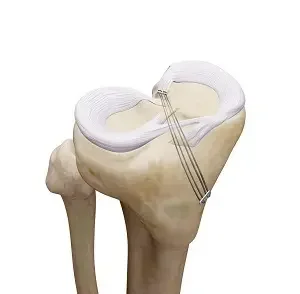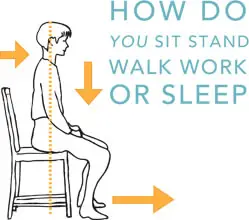Types of Weight-Loss Surgery
Introduction
Numerous factors determine which kind of weight-loss surgery, also known as metabolic and bariatric surgery, may be most effective in assisting a patient in losing weight. Your doctor should be consulted about the type of surgery that would be most appropriate for types of Weight-Loss Surgery.
What Are The Surgical Options?
Surgeons in the US often carry out three kinds of procedures.
- stomach sleeve
- stomach bypass
- gastric band that is adjustable
A fourth procedure that surgeons do less frequently is biliopancreatic diversion with a duodenal switch.
Gastric Sleeve
A physician eliminates the majority of your stomach during gastric sleeve surgery, also known as vertical sleeve gastrectomy, leaving just a banana-shaped portion that is stapled shut.
You feel fuller sooner after the procedure because less food can fit in your stomach. Resection of the stomach may potentially have an impact on gastrointestinal hormones or microorganisms that regulate metabolism and hunger.
Because part of the stomach is removed permanently, this kind of operation cannot be undone.
Gastric Bypass
There are three phases involved in gastric bypass surgery, often known as Roux-en-Y gastric bypass. Your stomach is first stapled, leaving a little pouch in the top part. Because the staples greatly reduce the size of your stomach, you eat less because you feel fuller sooner.
Your small intestine will next be divided in half by the surgeon, with the bottom portion being directly attached to the tiny stomach pouch.
The upper section of your small intestine and the majority of your stomach are where food passes through, allowing your body to absorb less calories. The top portion of the small intestine is then reconnected to a new place farther down the lower portion of the small intestine by the surgeon.
In order for food to be completely digested, this permits the digestive fluids in the stomach to go from the small intestine’s upper section to its lower half.
Hormones, bacteria, and other chemicals in the gastrointestinal system that may impact hunger and metabolism are altered by the bypass surgery. Although a surgeon might do a gastric bypass if it is medically required, it is difficult to reverse.
Adjustable Gastric Band
During this kind of procedure, the top of your stomach is wrapped in a ring that has an inflatable band inside to form a little pouch. The gastric band causes you to feel full after only a modest quantity of food, similar to gastric sleeve and gastric bypass surgery.
A round balloon that is filled with saline solution is located inside the inner band. By injecting or withdrawing the saline solution using a tiny device called a port that is inserted beneath your skin.
To increase the opening from the pouch to the remaining portion of your stomach, the surgeon can adjust the inner band. You will require many follow-up appointments following surgery in order to modify the size of the band opening.
The surgeon may remove the band if it is causing you issues or if it is not assisting you in losing enough weight.
Compared to gastric sleeve or gastric bypass surgery, adjustable gastric band surgery is now less prevalent in the US because of increased problems, most notably the requirement for band removal owing to intolerance.
Additionally, gastric band surgery usually leads to much less weight reduction and has a higher rate of problems, the most common of which is the requirement for band removal owing to intolerance.
Biliopancreatic Diversion With Duodenal Switch
A surgical technique called biliopancreatic diversion with duodenal switch, or “mixed surgery,” comprises two separate procedures. The first method is like having a gastric sleeve surgery. The small intestine is divided into two paths by two surgical procedures.
Meals travel via a single tract, excluding the majority of the small intestine. The quantity of calories and nutrients ingested is decreased as a result.
As food travels through the other intestinal tract and into the colon, digestive fluids from the stomach combine with it. When comparing this type of surgery to the other three procedures mentioned above, you can lose more weight.
It is, however, also the most likely to result in postoperative complications and a deficiency of proteins, vitamins, and minerals in your body.
Surgeons seldom conduct this specific operation because of these reasons. For individuals who have specific medical issues and are extremely obese, some surgeons may advise it.
Most Common Weight-Loss Surgeries
Gastric Sleeve
What it is?
About 80% of the stomach is removed by a surgeon, leaving behind a lengthy, banana-shaped pouch.
Pros
- more weight reduction compared to a gastric band
- No intestinal alterations
- No outside things inserted into the body
- brief hospitalization
Cons
- not reversible
- Peril of inadequate iron and vitamin intake
- Greater likelihood of surgical complications compared to gastric band
- Hazard of hiatal hernia (produced by the stomach pressing on the diaphragm) with acid reflux
Gastric Bypass
What it is?
A tiny pouch is created when a surgeon staples the upper portion of the stomach and connects it to the middle section of the small intestine.
Pros
- more weight reduction compared to a gastric band
- No outside things inserted into the body
Cons
- challenge to undo
- Greater likelihood of vitamin and iron deficiency compared to the gastric band or gastric sleeve
- Greater risk of complications from surgery compared to gastric band
- might make alcohol use disorders more likely
Adjustable Gastric Band
What It Is?
An inflatable band is wrapped around the upper portion of the stomach by the surgeon, forming a little pouch with a movable aperture.
Pros
- Adaptable and reversible
- Minimal chance of complications during the initial operation and brief hospital stay
- No intestinal alterations
- Minimal chance of vitamin deficiency
Cons
- less weight reduction than with other kinds of bariatric procedures
- many follow-up appointments to modify the band since some people might not be able to
- Potentially, the band system might be replaced or removed entirely in a future procedure.
How Is The Surgery Performed?
Most weight-loss surgeries are performed under general anesthesia using laparoscopic techniques, which only involve minor incisions.
The surgeon can introduce tiny instruments and a scope that is connected to a camera to show pictures onto a video monitor through these incisions. Compared to open surgery, laparoscopic surgery may result in less discomfort and scars and has fewer risks.
A speedier recovery is another possible benefit of laparoscopic surgery. For certain patients, open surgery—which requires a single, major abdominal incision—may be a preferable choice over laparoscopic surgery.
If you are really obese, have had stomach surgery in the past, or have other complicated medical issues, you could require open surgery.
What should I expect before surgery?
You will consult with a number of medical specialists before surgery, including a bariatric surgeon, an internist, a dietician, and a psychiatrist or psychologist.
- The internist will request blood tests, do a complete physical examination, and inquire about your medical history. It could be beneficial for you to give up smoking at least six weeks before surgery if you smoke.
- The nutritionist will help you be ready for how your life will change following surgery by going over what and how much you may eat and drink.
- A psychiatrist or psychologist may conduct an evaluation to determine your readiness to handle the difficulties associated with weight-loss surgery.
- More information on the procedure, including how to get ready for it and what kind of aftercare you’ll need, will be provided by the surgeon.
Before and after surgery, these medical specialists will also counsel you to adopt a balanced diet and increase your physical activity.
Reduce your body weight and get your blood glucose, or blood sugar, closer to normal before surgery to reduce the risk of complications from the procedure.
You can attend groups offered by certain weight-loss surgery programs both before and after the procedure to get support and answers to any issues you may have.
What should I expect after surgery?
You will need to recuperate and rest following surgery. Getting up and moving around the home could hasten your recuperation. Start out cautiously and heed the advice of your healthcare provider on the kind of safe physical activity you may engage in.
As you feel more comfortable, increase the amount of physical exercise you do. You will most likely be placed on a liquid diet following surgery. Over the course of a few weeks, you will switch to a soft diet that consists of foods like cottage cheese, yogurt, and soup.
You will eventually start eating solid meals again. You may find out which meals and drinks you should avoid and which ones you may have from your healthcare provider. You need to eat modest meals and chew your food well.
To ensure you are getting adequate vitamins and minerals, you must take the dietary supplements recommended by your healthcare provider.
How much weight can I expect to lose?
After weight-loss surgery, the amount of weight lost varies depending on the patient and the procedure. According to one research, patients undergoing gastric bypass, gastric sleeve, and adjustable gastric banding lost anywhere from 38 to 87 pounds after a year.
Among the three most common surgeries, gastric bypass had the greatest average weight loss, but one month after the procedure, it also had the highest risk of problems.
Over time, the majority of persons gained some weight back, but it was often little in comparison to their initial weight reduction. It’s possible that you lose weight differently.
Recall that maintaining your healthy living practices is just as important to achieving your objective as having the procedure.
FAQ
Which surgical procedure is most effective for weight loss?
Various degrees of success can be achieved with weight loss using bariatric surgery. After three years, gastric bypass patients typically lose 71% of their extra weight. After three years, sleeve gastrectomy patients typically lose 66% of their extra weight.
Which type of weight reduction surgery is the safest?
We may conclude that the Vertical Sleeve Gastrectomy is the safest weight reduction procedure after weighing all of the advantages and disadvantages of the procedure. Your stomach will become smaller after this procedure, which will make you eat less. However, there is a chance of difficulties and adverse effects, just as with most surgical treatments.
How do I choose weight loss surgery?
A group of medical professionals, nurses, and other experts will assist you in deciding if this is the best course of action for you. The procedure the team employs to assess your readiness for weight-loss surgery has the additional purpose of empowering you to make an educated choice.
What is the newest weight loss surgery?
One more recent kind of less invasive weight-loss therapy is endoscopic sleeve gastroplasty. Endoscopic sleeve gastroplasty involves no cuts. As an alternative, a suturing tool is sent down the neck and into the stomach.
What is the fastest fat loss surgery?
By altering both hunger and gastrointestinal emptying, the gastric sleeve aids in weight loss. The most effective treatment is gastric bypass; patients may expect to lose over 70% of their extra weight over the course of two years and keep it off in the long run.
What is the safest weight loss injection?
Semaglutide. The active component of the brand-name medications Ozempic and Wegovy is semaglutide. While Ozempic is FDA-approved to treat type 2 diabetes (although it can potentially be administered off-label for weight reduction), Wegovy is FDA-approved for weight loss.
Which weight-loss procedure has a zero fatality rate?
According to the study’s findings, gastric sleeve surgery was the least risky of the three popular surgical weight loss methods and also the safest.







